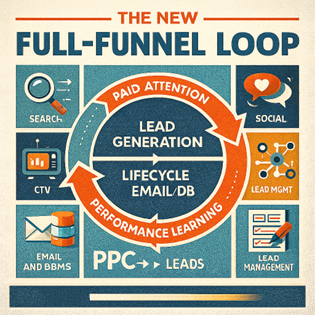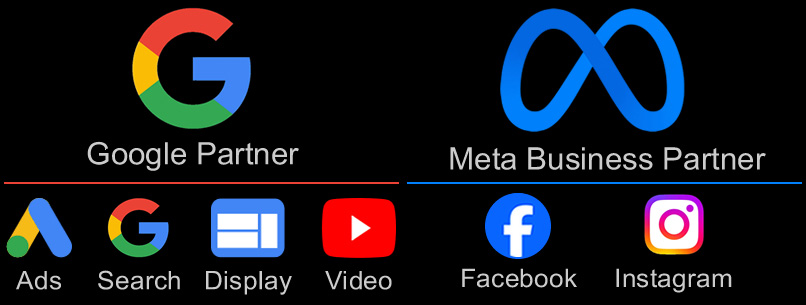The digital marketing world has entered a new era – one where privacy is taking center stage. From cookie-blocking updates on popular browsers to the growing number of regulations like the GDPR and CCPA, businesses are grappling with how to maintain ad performance in an environment that prioritizes user privacy.
Marketers can no longer rely on third-party cookies to track consumer behavior across the web. So, how can businesses continue to deliver effective ad campaigns in a privacy-first world? Here’s how to evolve and keep your advertising strategy on track.
1. Embrace First-Party Data
With third-party cookies on their way out, first-party data has become the new gold standard for marketers. First-party data is information that your business collects directly from its audience, such as email subscriptions, survey responses, purchase histories, and website interactions. Since it comes directly from your customers, this data is more accurate, reliable, and privacy – compliant.
How to Maximize First-Party Data:
- Engage with your audience directly: Collect email addresses through newsletter sign-ups, gated content, and offers like whitepapers, webinars, or eBooks. This allows you to build a database of customers and prospects who are genuinely interested in your brand.
- Enhance personalization: Use the first-party data you’ve collected to create more personalized marketing experiences. Tailored content, product recommendations, and email campaigns based on users’ preferences and behaviors can significantly boost engagement.
- Invest in CRM and CDP platforms: Customer Relationship Management (CRM) and Customer Data Platforms (CDP) allow you to consolidate and analyze first-party data to get a better understanding of your audience.
2. Utilize Contextual Targeting
In the absence of third-party cookies, contextual targeting is making a comeback. Contextual targeting involves placing ads on web pages based on the content of the page, rather than tracking users’ behaviors. For example, if your brand sells running shoes, your ads would appear on articles or blogs about fitness, health, and running.
Benefits of Contextual Targeting:
- Relevance without privacy concerns: Since this method doesn’t rely on tracking cookies, it respects users’ privacy while still delivering relevant ads based on the content they’re viewing.
- Improved ad engagement: Ads served in a contextually relevant environment tend to perform better because they’re aligned with the interests of the reader at that moment.
- Broadened reach: By focusing on content rather than user profiles, you can reach new audiences who might not have been in your retargeting pool but are still interested in your product or service.
3. Be Transparent and Build Trust
In today’s privacy-conscious environment, consumers want to know how their data is being used. Being transparent about your data collection practices is no longer optional – it’s essential to build trust with your audience and ensure compliance with privacy laws.
Best Practices for Transparency:
- Clear privacy policies: Make sure your privacy policy is easy to understand and readily accessible on your website. It should outline how you collect, store, and use customer data.
- Consent management: Implement user-friendly consent management tools that allow visitors to opt in or out of data tracking easily. This is especially important in regions governed by GDPR or CCPA regulations.
- Communicate the value of data: Help customers understand why sharing certain information benefits them, such as receiving personalized content, better product recommendations, or exclusive offers. When users see the value, they are more likely to consent to data collection.
4. Leverage AI and Machine Learning for Smarter Targeting
With less direct access to consumer data, marketers need smarter tools to predict customer behavior and optimize campaigns. Artificial Intelligence (AI) and machine learning (ML) are becoming vital in this shift, as they can analyze patterns and trends in first-party and contextual data to target audiences more effectively.
AI-Driven Strategies:
- Predictive analytics: AI can help you predict future consumer behaviors based on current trends and data. This can be particularly useful for audience segmentation and campaign personalization.
- Content optimization: Machine learning can analyze which types of content perform best with certain audiences, allowing you to adjust your creative and messaging accordingly.
- Ad bidding optimization: Programmatic platforms powered by AI can dynamically adjust bidding strategies in real-time, maximizing the return on ad spend while adhering to privacy standards.
5. Invest in Privacy-First Ad Solutions
As the demand for privacy grows, many advertising platforms are developing privacy-first solutions that allow marketers to target consumers without relying on invasive tracking methods. Google’s Privacy Sandbox and Facebook’s Conversions API are examples of tools designed to maintain ad performance while adhering to new privacy regulations.
Key Privacy-First Tools to Explore:
- Google’s Privacy Sandbox: This initiative is designed to replace third-party cookies with alternative tracking methods that protect user privacy, such as Federated Learning of Cohorts (FLoC) and Topics API.
- Facebook Conversions API: This tool allows advertisers to share data directly from their server to Facebook’s servers, bypassing browser-based tracking and ensuring more accurate measurement of conversions.
- Unified ID 2.0: Developed by The Trade Desk, this solution provides a more privacy-friendly way to identify users across devices, offering an alternative to traditional third-party cookies.
6. Prioritize Data Security
With the rise of privacy laws comes the need for more robust data security measures. Protecting your customers’ personal information not only keeps you compliant but also helps build trust with your audience. Implement strong security protocols to safeguard the data you collect, including encryption, secure servers, and regular vulnerability assessments.
Essential Data Security Tips:
- Encrypt sensitive data: Ensure that all personal and financial information collected is encrypted during transmission and storage.
- Secure your website: Implement HTTPS and other security measures to protect your website from data breaches and hacking attempts.
- Stay up to date: Regularly update your security software and protocols to ensure you’re protected against new threats.
Conclusion: Evolving in a Post-Cookie World
As privacy regulations continue to evolve, so too must your digital marketing strategy. By embracing first-party data, leveraging contextual targeting, and utilizing AI-driven tools, businesses can not only maintain ad performance but also strengthen their relationships with consumers in a privacy-first world.
Transparency and trust are now more important than ever, and businesses that prioritize these values will be better positioned to succeed in this new era of digital marketing.



